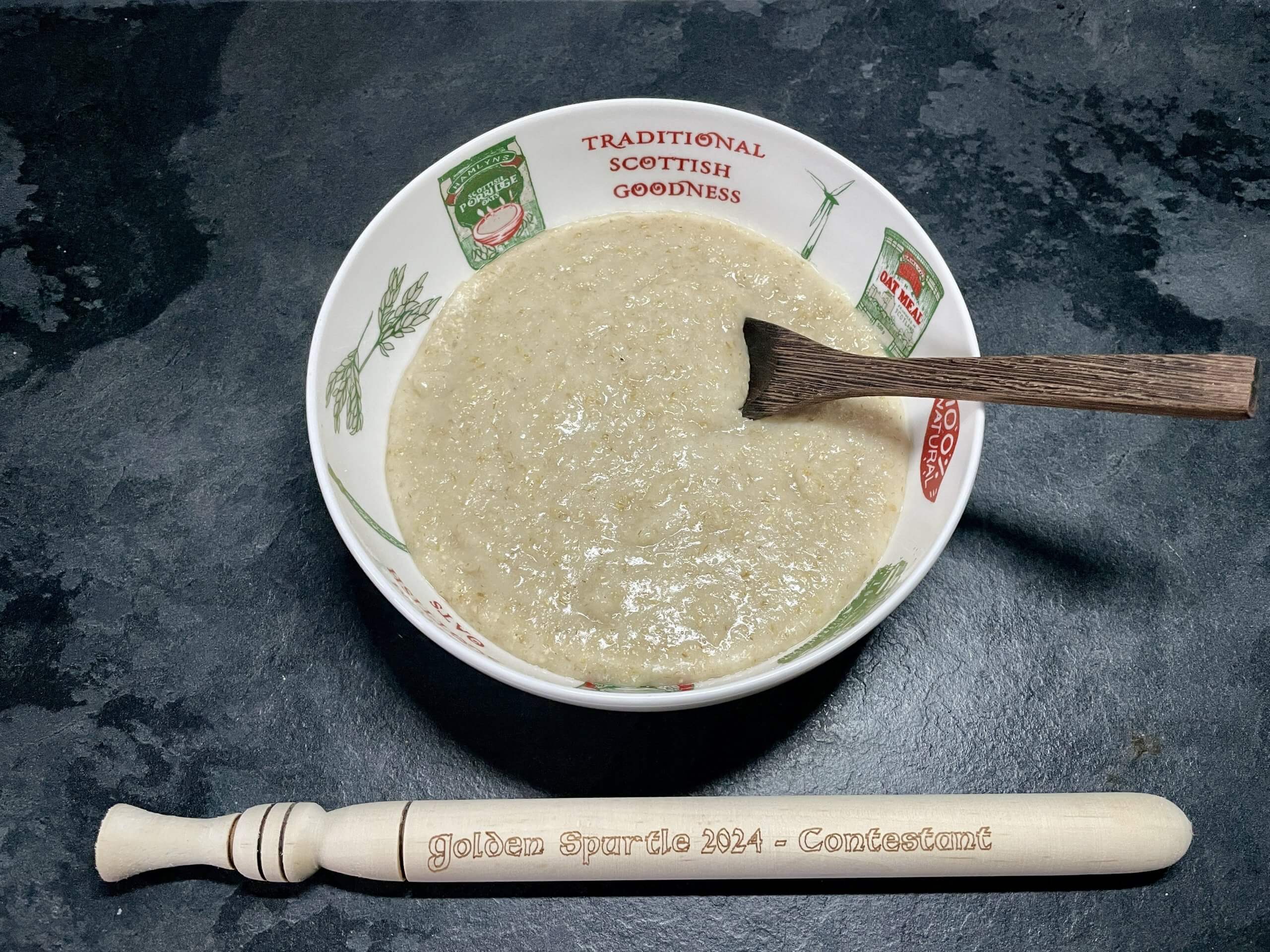
Recently, I won the World Porridge Making Championship and here is my World Championship Winning Porridge recipe. It is, officially, the best porridge in the world!
I’ve spent over three years trying to make the perfect porridge recipe and in that time I’ve done a fair bit of research. As the competition only allows for oats, water & salt to be used, that is what I focused on first.
The Best Water To Oats Ratio For Porridge
Scottish water is pretty good anyway, but I tend to use bottled spring water when competing, otherwise regular Scottish tap water is just fine. However, I think a 3 to 1 ratio of water to oats makes for the creamiest porridge recipe.
Which Oats Make The Best Porridge?
After a bit of trial and error, I have settled on using a blend of oats for my porridge. I use equal amounts of Hamlyns Oatmeal and Hamlyns Pinhead Oatmeal. Hamlyns produce the best porridge oats and are local to me, being only 30 miles from my home.
Do You Need To Soak Oats For Porridge?
Yes, depending on the oats. I always soak the Pinhead Oatmeal overnight in a 2:1 ratio of cold water. I do not soak the regular oatmeal as it does not need it. Soaking the pinhead oats makes them cook quicker and results in a creamier texture.

What Is The Best Temperature To Cook Porridge?
This was a new development this year and I have this to thank for winning the Porridge Making World Championship, improving on my finalist place last year.
I find that cooking porridge at no higher than 92 degrees celsius results in the best, creamiest porridge. The reason for this is that starch starts to break down above 92 degrees and you end up with a more watery porridge at higher temperatures. You may have to cook it slightly longer but it is worth it. I used a meat thermometer probe to keep the temperature exact.
Cooking anything with starch in it to 92 degrees celsius will result in a creamier texture, it works with regular oatmeal , quick cook porridge and risotto, especially.
How Long To Cook Porridge For?
I cooked my World Championship winning porridge for 25 minutes in total, maintaining a steady temperature of 92 degrees for as long as possible.
Which Salt Goes Best In Porridge?
For the last two years I have used Himalayan Pink Salt in porridge. It’s got a less “salty” flavour and adds a unique taste, which is slightly sweeter than regular sea salt. I add the salt sparingly, to taste. Salt should only be added at the end of cooking, after about 20 minutes.
Obviously you can add other toppings when you are making this at home but even if making a sweet porridge I still tend to add a bit of salt to balance out the flavours.
Have a go at making your own version of The Best, Creamiest Porridge in the World using my World Porridge Making Championship Winning Porridge recipe and I’ll maybe see you in a future edition of the World Championships!

World Championship Winning Porridge Recipe
Equipment
- 1 Spurtle
- 1 Thermometer Probe
Ingredients
- 1 cup (170g) pinhead oats
- 2 cups cold water for soaking overnight
- 1 cup (150g) oatmeal
- 4 cups cold water
- 1.25 tsp Himalayan pink salt
Instructions
- Soak the pinhead oats in 2 cups of water overnight. Do not soak the oatmeal.1 cup (170g) pinhead oats, 2 cups cold water
- In the morning place the pinhead oats and soaking water in a heavy bottomed pan. Add the oatmeal and the additional cold water.1 cup (150g) oatmeal, 4 cups cold water
- Bring the porridge up to no more than 92 degrees celsius. Use a meat or jam thermometer to constantly measure the temperature. Do not boil it. The 92 degrees allows for the creamiest porridge possible.
- Heat & stir with a spurtle for 20 minutes then add the salt. Add a little bit more water, depending on your desired consistency.1.25 tsp Himalayan pink salt
- Cook for a further 5 minutes and serve.




